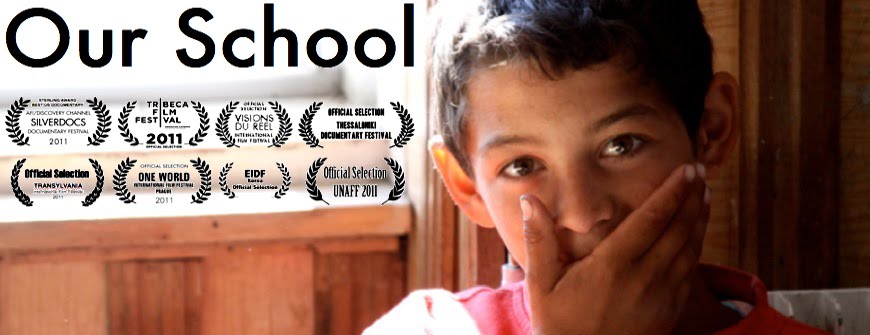 |
| The bridge Roma kids have to cross on the way to school Photo credit: Ovidiu Marginean (c) Sat Mic Film, LLC |
[Blog post by Producer-Director Mona Nicoara, initially published on the Open Society Foundations blog. Our School was supported in part by a grant from the Open Society Foundations.]
I started working on Our School in 2005, mainly out of frustration. As a human rights activist, I had seen the excellent work of NGOs who had been working for years to document, litigate, and advocate against the widespread, insidious, often intractable practice of segregating Roma children into separate classes, schools, or even special schools for children with mental disabilities, get little traction in the public imagination. When I started the project, my friends and family back in Romania were puzzled: Surely segregation can’t exist in a European country, so what exactly was I going to document?
Indeed, five years and three European Court of Human Rights judgments later, the issue has remained largely invisible in the public mind. This is as much a failure of the imagination—that which we do not know about must not exist—as it is a symptom of the tremendous social distance between Roma and non-Roma: Roma and their problems are to be avoided or at best pitied, but never understood on their own terms or, even more alarmingly, engaged with. It’s as if we lived side by side, on facing banks of the same river, yet unable or unwilling to cross the bridge to the other side.
Once our project got underway and we finally had visible, filmed proof of segregated education, this attitude generated a second line of questioning. Friends, family, and colleagues began asking: How did we get that kind of access? What exactly did we have to do for families to allow us to film children waking up and washing up for school, or for teachers to allow us to film their classes? Implicit in those questions is the assumption that Roma are a closed, secretive, society, as well as the insinuation that Roma would open up only for material gain—that a toll would have to be extracted to cross the bridge, as it were.
Our answer still engenders disbelief and disappointment: We went there, introduced ourselves and the project to everyone, and asked for permission to film. The small Romanian town where we filmed, Targu Lapus, prides itself on its hospitality—as well they should. There were no obstacles, no promises extracted, no conditions imposed. From the Roma and non-Roma families we followed to the Ministry of Education, from school principals to substitute teachers, everyone cooperated in the spirit that independent documentation helps improve our collective understanding of what seems to be an intractable problem.
There is tremendous generosity in our participants’ willingness to go along with a project that may not help them directly, but can hopefully advance our grasp of the issue. We felt a huge burden of responsibility to do justice to that kind of openness and candor, and we wanted to fairly represent the position of all stakeholders.
We discovered that it wasn’t easy. It is always easier to make a one-sided piece than to build a complex story, and the temptation to simplify your message as you get closer to reaching a broader public is always there. Some broadcasters wanted a hard-hitting current affairs-type investigation. Some funders wanted a more streamlined story line. But we always knew that, in order to create a lasting, emotional connection to the issue, we had to do justice to all sides. In other words, the film had to work as a mirror in which every one of us can recognize themselves, and in which every one of us begin to see and question the structural barriers that keep us apart.
A rickety makeshift bridge that some of the Roma kids had to cross on their way to school every day came to embody that problem for us. Seeing seven-year-old kids cross the narrow wooden ladder perilously perched over a body of water brought out my deepest fears as a mother, and my worst anxieties as a producer. But because we felt we owed it to the children to try to cross the bridge ourselves, we tried to do so, and failed—repeatedly, miserably, sometimes comically. We realized that the bridge was just one, very small, part of what these kids were up against, every day of their life.
But the bridge was not an obstacle only for the kids. It was as much of an obstacle for adults. How were teachers expected to do their duty and visit these children’s homes? How were they supposed to understand these children if they never saw how they live? How are administrators and policy-makers supposed to make decisions about something they never see?
The least we could do was to show them the bridge, to give them a bit of access to the lives of the Roma, and have them listen to the voices of these children. And to hope that, just as everyone cooperated with this film project, they would be willing to cooperate with understanding the cultural, economic, and emotional mechanisms which need to be dismantled in order to bring about real change and to make crossing social bridges not only possible, but banal.
